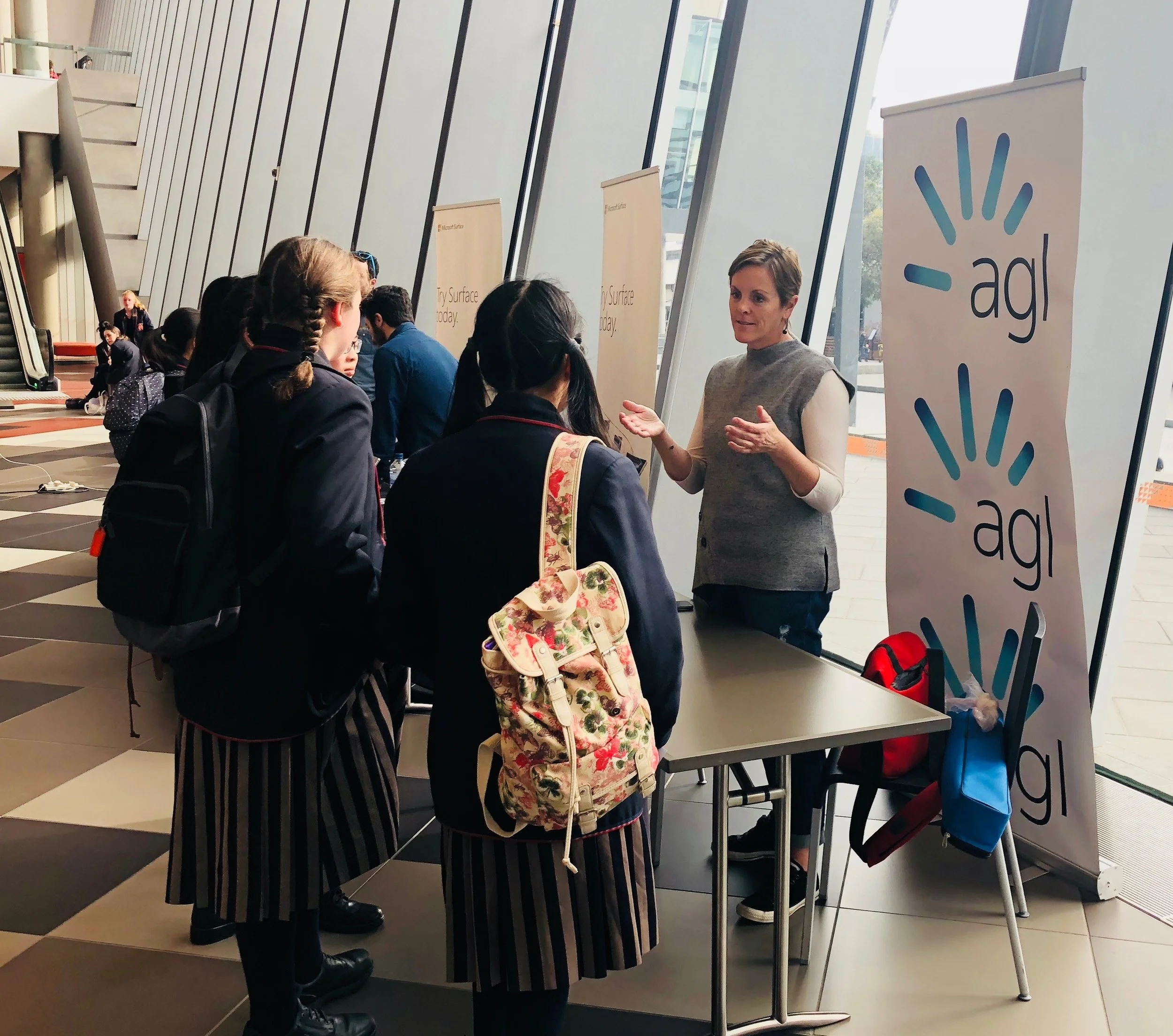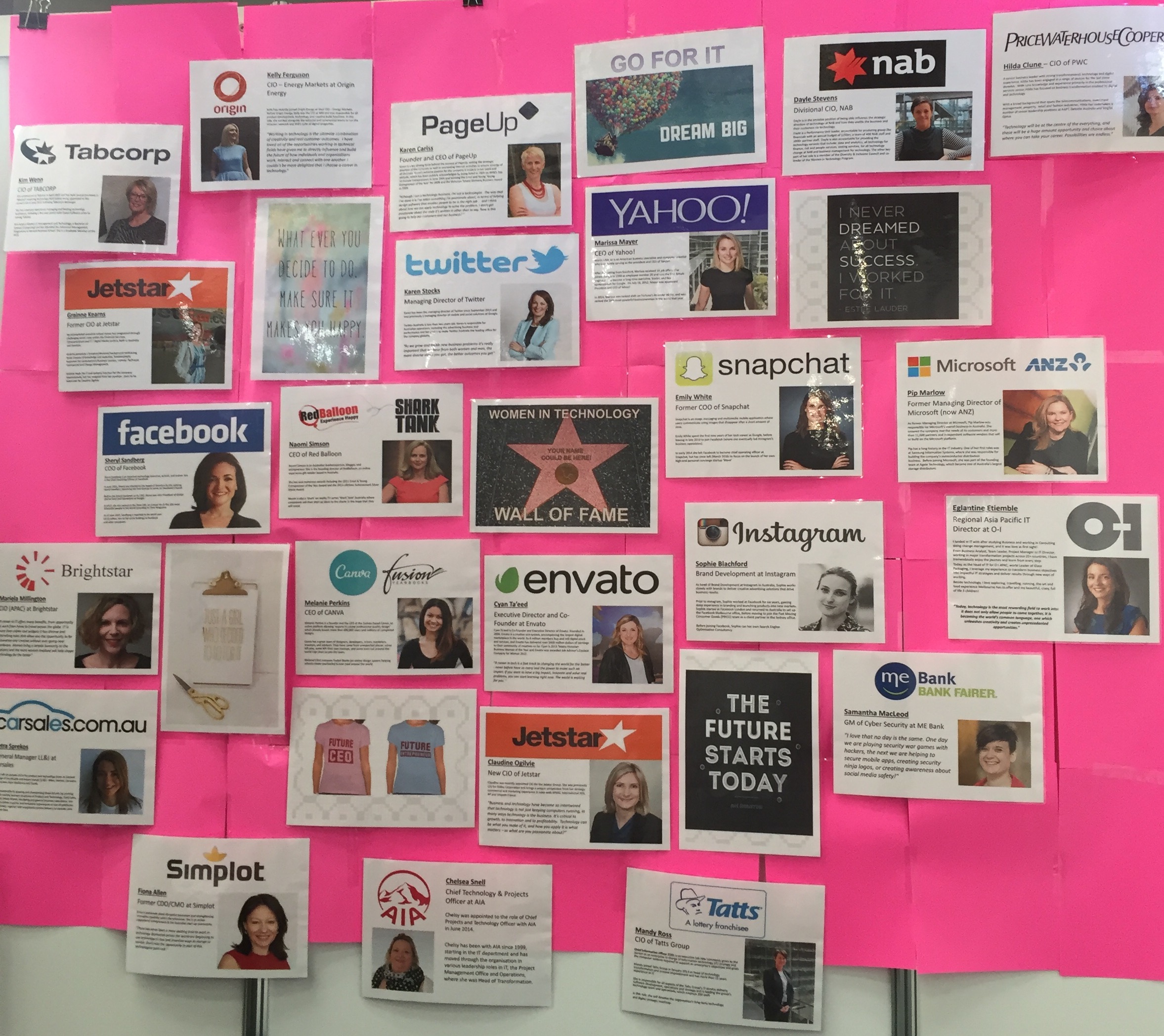STEM pipeline
Last week I got the chance to speak with secondary students about careers in STEM, twice. The first was at the Big Day In, a conference designed by students for students about careers in technology. The second was at AGL’s Loy Yang power station with the Latrobe Valley STEM Sisters, who spent a day visiting local organisations and learning about careers in STEM. I was there to share my experiences and knowledge, and walked away learning from the experience myself.
I have been working on getting more kids, particularly girls, into STEM for some time. I’ve landed on three things that make the most difference.
Role models
When I was 11 I wrote in a homework assignment that when I grew up I wanted to play basketball for the Australian Opals. That goal wasn’t questioned by anyone, it was widely accepted as entirely possible. A few years later, when I said I wanted to be an astronaut, the reception from my careers advisor was the opposite.
The Opals career was entirely possible because every day, when I walked into the basketball stadium at Ballarat, I walked past a framed photo of Robyn Maher. Robyn had played for my team Exies in her youth and is a three-time Olympian with the Australian team, winning bronze in Atlanta in 1996. There were no female astronauts from Ballarat.
“You can’t be what you can’t see” is often used when it come to the importance of role models. You can, but that’s a different topic. What is really important is that kids see people like them, doing things that they are interested in, and being paid for it. The more that we can showcase “people like them”, and the more that these role models spend time talking to and mentoring kids, the more interest and diversity we will see in careers in STEM.
Getting hands on
While I was at Loy Yang with the STEM Sisters we went on a quick tour of AGL’s power station. That wasn’t enough for me. My curiosity was at a near all-time high. I started asking questions and there were people at the ready to step me through the whole process. Fascinating stuff.
I have long advocated that the keys to success in STEM are curiosity, communication and problem solving. One teacher at the Big Day In suggested that the key was an ability to get bored quickly. Curiosity can be a strength and a weakness, but for kids that are high on curiosity, giving them the chance to gets hands on with exploring STEM is critical.
After school clubs like Fizzics and CodeClub, workshops with Robogals, the programs offered by Girl Geek Academy, and Eddie Woo’s online maths classes, are all great for giving kids the opportunity to get hands on and let their curiosity run wild. They are also great for creating friendship groups that will become tomorrow’s support networks. Also, just quietly, every time I’m at a robotics or coding workshop, I’m in there getting hands on too – they are so much fun.
Getting real about careers
Years ago, in a live radio interview on the ABC, I completely failed in explaining what I actually did as a career in technology. It’s something that I’ve worked on since. If you think of the “software update available” and “update now” options that appear on your smartphone, my job now is to build that update and make it happen for the technology that people use at AGL. I also spend a lot of time thinking about the future – what is possible, what is needed and what the next update might be.
Kids think of a career as making a decision on what they are going to be doing every day for the rest of their life. That’s not really the case, but it is positioned that way and the pressure to make such a huge decision is real for many young people. To encourage more kids into STEM we need to expose the reality of what a job in STEM looks like. We need to make it real. What they will be doing each day, what they will get to be hands on with, even what difference it will make in the world.
The robotics workshops run by Robogals are a great example of how this can happen. After working with the robots – getting them out of a maze or using them to win a soccer game – the workshop leaders talk with the kids about what they have just experienced, and what a career in robotics might look like. The elements of design, technology, science, engineering and more are all discussed, linking to the subjects the kids are learning about at school. Then there is a conversation about what an engineer does and how the robots they just played with is a real career. Who wouldn’t want to be an engineer after that!
Role models, getting hands on and getting real about careers in STEM – these are what I think make a difference. STEM Sisters in the Latrobe Valley are tapping into all three, but there is a need for those of us already in STEM to spread the word further and to do more.
I don’t have the answers, just more questions. How are you making yourself visible to the next generation? How do you explain what you do? What work experience could you design for kids to get hands on?






